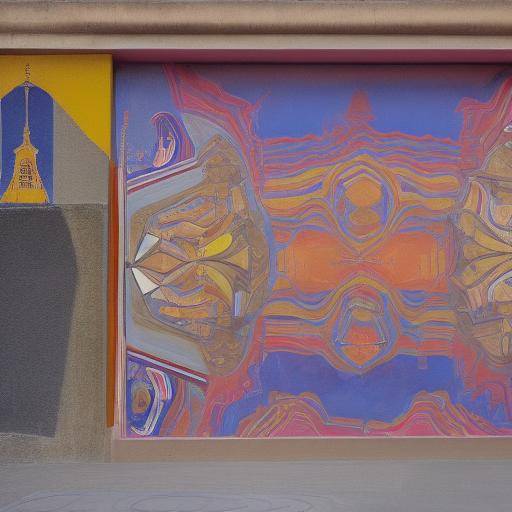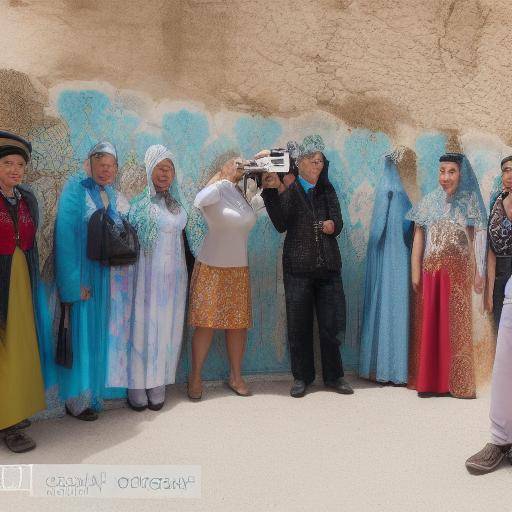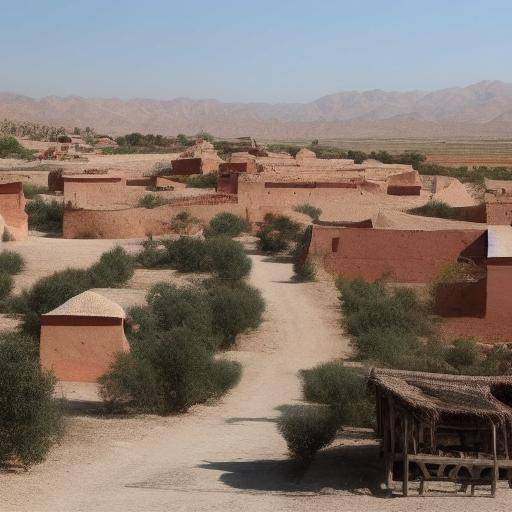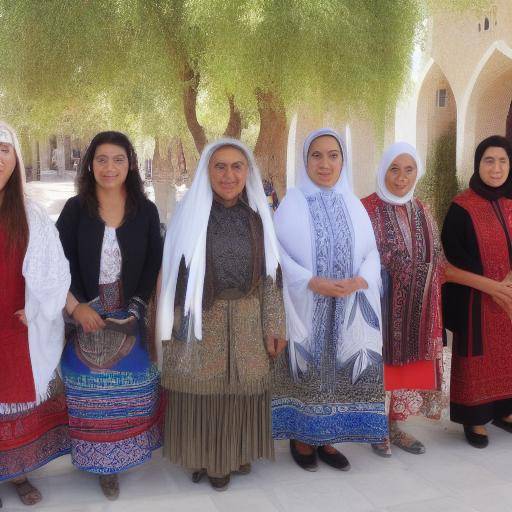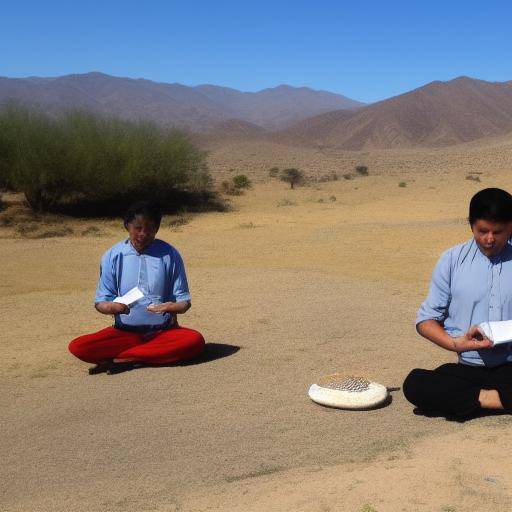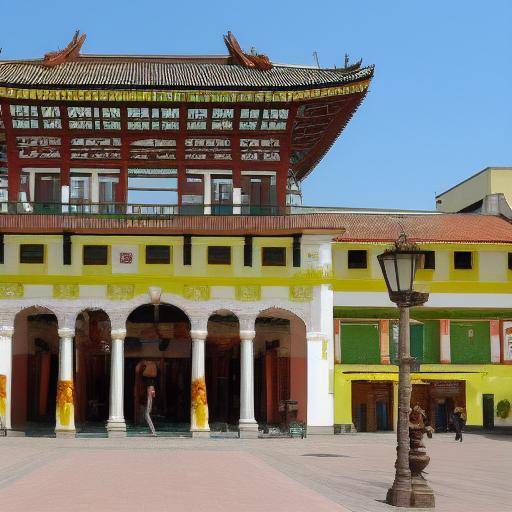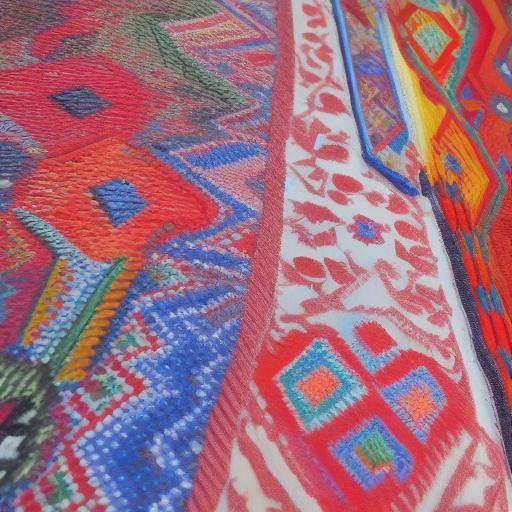
Art on the Silk Road in Uzbekistan is a fascinating expression of the rich history and unique creativity of this region. Throughout this article, we will explore the influence of the Silk Road in Uzbek art, from traditional crafts to the stunning tapestries and iconic decorations that have endured over the centuries. We will discover the historical and cultural importance of these artistic expressions, as well as their relevance today. Join us on this journey of discovery through the beauty and craftsmanship of the Silk Road in Uzbekistan.
Introduction
The legacy of the Silk Road has left an indelible mark in Uzbekistan, enriching its art and culture over time. This former commercial corridor has facilitated the exchange of ideas, cultures and, of course, art objects. The exquisite upholstery, intricate ceramics, and unique decorations are silent witnesses of the artistic heritage that has endured throughout the centuries in Uzbekistan.
History and Background
Origins and Evolution of Art on the Silk Road
The Silk Road, which connected east and west, was much more than a simple commercial corridor. It was a cultural exchange channel that played a crucial role in disseminating knowledge, including techniques and artistic styles. The influences of China, Persia, India and many other cultures intertwined along this path, leaving a profound mark on Uzbek art.
The tapestries, carpets and ceramics of Uzbekistan are testimony to this rich history. The geometric and floral designs, as well as the vivid colors, reflect the diversity of influences that have converged in this region over the centuries. Traditional crafts have been passed from generation to generation, keeping alive the artistic heritage of the Silk Road.
Significant Developments and Key Figures
During the time of the imperial dynasties, art on the Silk Road experienced an unprecedented blossoming. The rulers and patrons promoted the creation of masterpieces, commissioning monumental tapestry and sumptuous ornaments that adorned palaces and mosques. These real orders brought Uzbek art to new heights, merging local elements with foreign influences to create a distinctive and exquisite style.
The rebirth of Uzbek art in the twentieth century marked another important milestone in its evolution. Artists and artisans began to reinterpret ancestral traditions, while exploring new technologies and creative approaches. This renewal has led to a renewed appreciation of the traditional arts and allowed Uzbek art to flourish in the global scenarios.
Analysis in Deep
Benefits and Challenges of Art on the Silk Road
Art on the Silk Road has been an inexhaustible source of inspiration and pride for Uzbekistan. Local handicrafts have been instrumental in the preservation of cultural identity, while creating economic opportunities for artisanal communities. However, modern challenges, such as global competition and industrialization, pose threats to the long-term viability of these traditional forms of art.
Current trends and perspectives
Today, art on the Silk Road is experiencing a rebirth, attracting both traditional art fans and international collectors. Thanks to preservation and promotion initiatives, the old artisanal techniques are merged with contemporary creativity, creating a fertile ground for innovation. This resurgence of interest in Uzbek art is reflected in the artistic community and in efforts to preserve and revitalize traditional techniques. Contemporary artists are exploring new forms of expression that incorporate elements of the artistic heritage of the Silk Road, offering a fresh and exciting look at ancestral traditions.
Comprehensive review
Applications and Best Practices of Uzbek Art
Uzbek art, with its intricate designs and skilled labor, has gained a prominent place in the global scene. From interior decoration to fashion, Uzbek creations have found their way into homes and wardrobes of people from around the world. The tapestries, ceramics and embroideries, with their rich history and incomparable crafts, represent a lasting investment in beauty and exceptional crafts.
Industry Perspectives and Expert Reviews
The art and culture experts recognize the immense value of art on the Silk Road and its lasting impact on the world art scene. The preservation of these forms of traditional art is crucial to keeping the cultural heritage of Uzbekistan alive. At the same time, adaptation to contemporary market demands and international promotion are important steps to ensure the long-term sustainability of these traditional artistic practices.
Case Studies and Real Life Applications
Uzbek tapestries, ceramics and decorations have found their place in diverse contexts, from home decoration to high seam. Detailed case studies illustrate the versatility and timeliness of these creations, demonstrating their ability to enrich and embellish various areas of everyday life. The experiences of those who have integrated Uzbek art into their vital spaces offer a insightful view of their impact and relevance in the contemporary world.
Comparative analysis
Silk Road, Uzbekistan and Uzbeko Art - Similarities and Differences
In exploring the connection between the Silk Road, Uzbekistan and Uzbek art, a fascinating narrative of influences and symbiosis emerges. The millennial trade routes have forged a unique artistic legacy in Uzbekistan, enriching its artisanal practices with a diverse range of cultural elements. As we examine the similarities and differences, we discover the complex and fascinating fabric of these entities in a common artistic fabric.
Examples Detailed and Scenarios
Specific examples of art in the Silk Road, from Uzbekistan, offer a profound view of the interaction between cultures and the influence of geography and trade in artistic development. From the intricate embroidery of Fergana to the elaborate tapestries of Samarcanda, each region of Uzbekistan brings its own brand to the rich artistic heritage of the region. By entering these detailed examples, we can appreciate the diversity and uniqueness of Uzbek creativity.
Practical Tips and Accessible Recommendations
Practical Guides and Useful Tips
For those who wish to incorporate Uzbek art into their lives, we offer practical advice and expert guidance on how to select, conserve and enjoy these craft masterpieces. From the choice of tapestries that complement interior decoration to the incorporation of Uzbek decorative elements in fashion and accessories, our guide provides useful tips to discover and appreciate the art in the Silk Road in the modern context.
Conclusions and Frequently Asked Questions (FAQ)
Conclusions in Summary
Art on the Silk Road in Uzbekistan represents an invaluable legacy that transcends borders and centuries. The dedication to traditional techniques combined with constantly evolving creativity has ensured that Uzbek art remains relevant in the contemporary world. With a rich history that intertwines with the influence of the Silk Road, the artistic expressions of Uzbekistan continue to captivate audiences from around the world, enriching the global cultural tapestry with its beauty and singularity.
Frequently asked questions (FAQs)
1. What is the importance of Uzbek art on the Silk Road?
The importance of Uzbek art on the Silk Road lies in its role as a cultural witness to a multi-directional exchange of ideas, techniques and designs. Uzbekistan's artistic expressions reflect the diversity of influences that converge in this region, encapsulating centuries of artistic and cultural heritage.
2. How can I acquire authentic Uzbek art?
The acquisition of authentic Uzbek art requires research and preferably the guidance of trusted experts or traders. When visiting Uzbekistan, local markets and workshops offer opportunities to acquire unique pieces directly from the artisans, ensuring authenticity and contributing to the support of the local artistic community.
3. What are the current trends in contemporary Uzbek art?
Contemporary Uzbek art has experienced a renewal, integrating traditional techniques with modern approaches. Artists and artisans are bringing Uzbek art to new territories, merging the rich artistic heritage of the region with fresh and contemporary expressions.
4. What kinds of Uzbek art are most valued today?
Uzbek tapestries, carpets and embroideries, known for their craftsmanship and aesthetic beauty, are among the most valued types of Uzbek art today. Their timeliness and versatility have positioned them as elements appreciated both in interior decoration and in art collections.
5. What is the economic impact of Uzbek art today?
Uzbek art plays a significant role in the local economy, providing employment and opportunities for artisans and artists. At the international level, Uzbek art contributes to the promotion of cultural tourism and art trade, generating positive impacts on the regional economy.
6. What is the importance of preserving Uzbek art for future generations?
Preserving Uzbek art is essential to ensuring the continuity of Uzbekistan ' s rich cultural heritage. Moreover, the preservation of Uzbek art is essential to keeping traditional techniques alive, to foster the sense of identity and cultural pride, and to ensure that future generations can appreciate and learn from this unique artistic expression.
With a rich history rooted in the Silk Road, Uzbek art has resisted the test of time, maintaining its relevance and beauty over the centuries. This artistic expression, rich in tradition and creativity, continues to captivate those who have the privilege of contemplating it, offering a window to the cultural and artistic heritage of Uzbekistan.
In short, art on the Silk Road in Uzbekistan is a cultural treasure that deserves to be celebrated and preserved. Through its upholstery, ceramics and traditional decorations, Uzbek art offers a unique vision of the history and creativity of this region. That this exploration has allowed us to appreciate the beauty and depth of Uzbek art and its connection with the fascinating history of the Silk Road.
The extension of the FAQ section and other sections could be adjusted according to specific requirements and available space.

